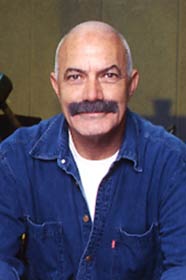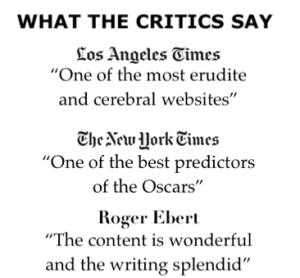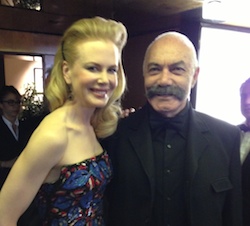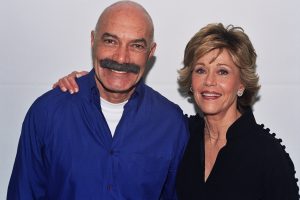In the mid to late 1960s, the Underground Cinema in Downtown New York was booming with new voices and radical visions by the likes of Jack Smith, Andy Warhol (and the Factory), Paul Morrissey, and others. These revolutionary artists paved the way for a whole cohort of young and audacious filmmakers such as Waters.
Paul Morrissey (born in 1938) is best known for his association with Andy Warhol and The Factory. “Flesh,” Morrissey’s first production for Warhol in 1968, centers on a bisexual played by Joe Dallesandro. Emotionally affectless but exuding natural charm, Dallesandro had previously starred in other Warhol films, such as “The Loves of Ondine” and “Lonesome Cowboys,” but it’s “Flesh” that made him a cult figure, in and out of the gay world. “Flesh” also featured the debut of other performers who would become Warhol superstars, Jackie Curtis and Candy Darling.
As the tale starts, Gerry (Geraldine Smith) kicks her boyfriend Joe out of bed, insisting that he goes out on the streets to make some money, which is needed for abortion by her girlfriend (Patti DÁrbanville). During a long day of activities, Joe encounters various clients, including an artist (Maurice Bradell) who wishes to draw him, and a gymnast named Louis Waldon. Shot on location in Manhattan (33rd Street, to be exact), “Flesh” shows Joe’s socializing with other hustlers (one played by his real-life brother), instructing tricks of the trade to a new hustler (Barry Brown), and spending time with his baby son. “Flesh” concludes with Joe in bed with Geraldine Smith and Patti D’Arbanville. After stripping Joe to his notorious genitalia, the women get more excited by each other, and the bored Joe simply falls asleep. Dallesandro, Candy Darling, and Jackie Curtis were later immortalized in Lou Reed’s song, “Walk of the Wild Side.” Unusually explicit in its graphic sexuality, “Flesh” became notorious (a cause celebre), when it was confiscated by the police during early showings.
The other films, “Trash” and “Heat,” in what became known as a trilogy, also gained immediate cult status, due to their sexual audacity and taboo-breaking. Though the two filmmakers are linked together, Morrissey differed from Warhol in his aesthetics. Warhol’s films are known for their non-narrative nature, lengthy and endless takes, drugs-fueled improvisations, and casually amateurish production values in lighting and sound. In contrast, Morrissey deployed more traditional strategies and more polished technical values. The acting in Morrissey’s films is also better, which may explain their relatively greater commercial appeal.
Made for the low budget of $25, 000, “Trash” (aka “Andy Warhol’s Trash”) was directed and written by Morrissey in 1970. Starring Dallesandro, transsexual Holly Woodlawn, and Jane Forth, the film depicts intravenous drug use, frontal nudity, both male and female, and graphic sex. Holly Woodlawn made her debut in this film, as did Jane Forth, a 17-year-old model who shortly thereafter appeared on the cover of Look magazine. The film also features Warhol superstars Andrea Feldman and Geri Miller. The episodic plot, set over one day, follows the heroin addict Dallesandro in his “holy quest” to score more drugs. Joe is observed overdosing, and attempting to fool a gay welfare agent into approving methadone treatment by asking his girlfriend Holly to fake pregnancy. Holly and the other women are sexually frustrated by Joe’s recurrent impotence, despite his well endowment, which is the main reason why Dallesandro became an attraction in the first place.
The trilogy’s third and most accessible panel, “Heat” in 1972, stars Dallesandro, Sylvia Miles, and Andrea Feldman. An unemployed former child star supporting himself as a hustler in Los Angeles, Joey Davis (Dallesandro) uses sex to get his landlady to reduce his rent. Sally Todd (Sylvia Miles, then best known for playing a prostitute in the initially X-rated Oscar-winner “Midnight Cowboy”), plays a former Hollywood starlet, who tries to help Joey revive his career, but her status (which is dubious) proves useless. Adding color to the tale is Sally’s psychotic daughter, Jessica (Feldman), who complicates the relationship between her mom and the emotionally-numb Joey. In his conception, Morrissey intended the film to be a parody of Billy Wilder’s 1950 classic, “Sunset Boulevard,” starring Gloria Swanson.



